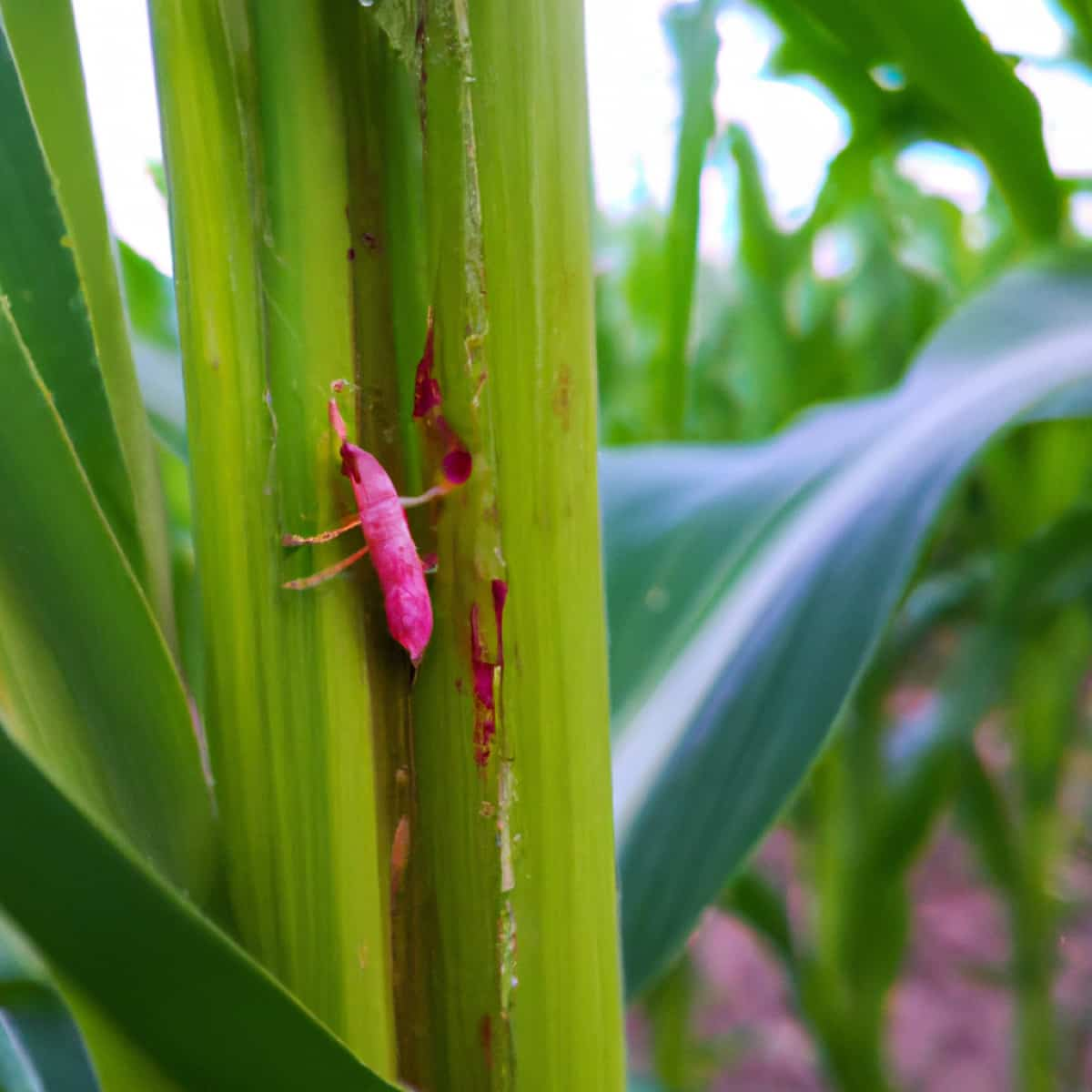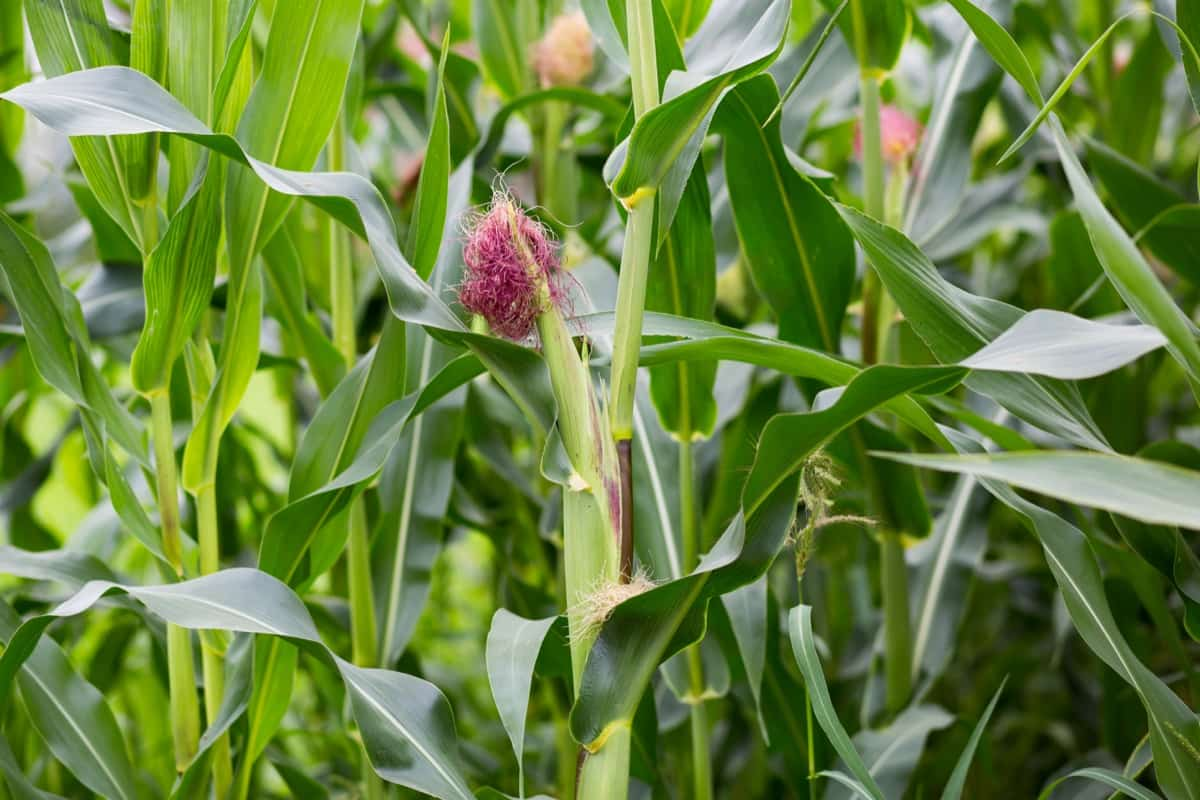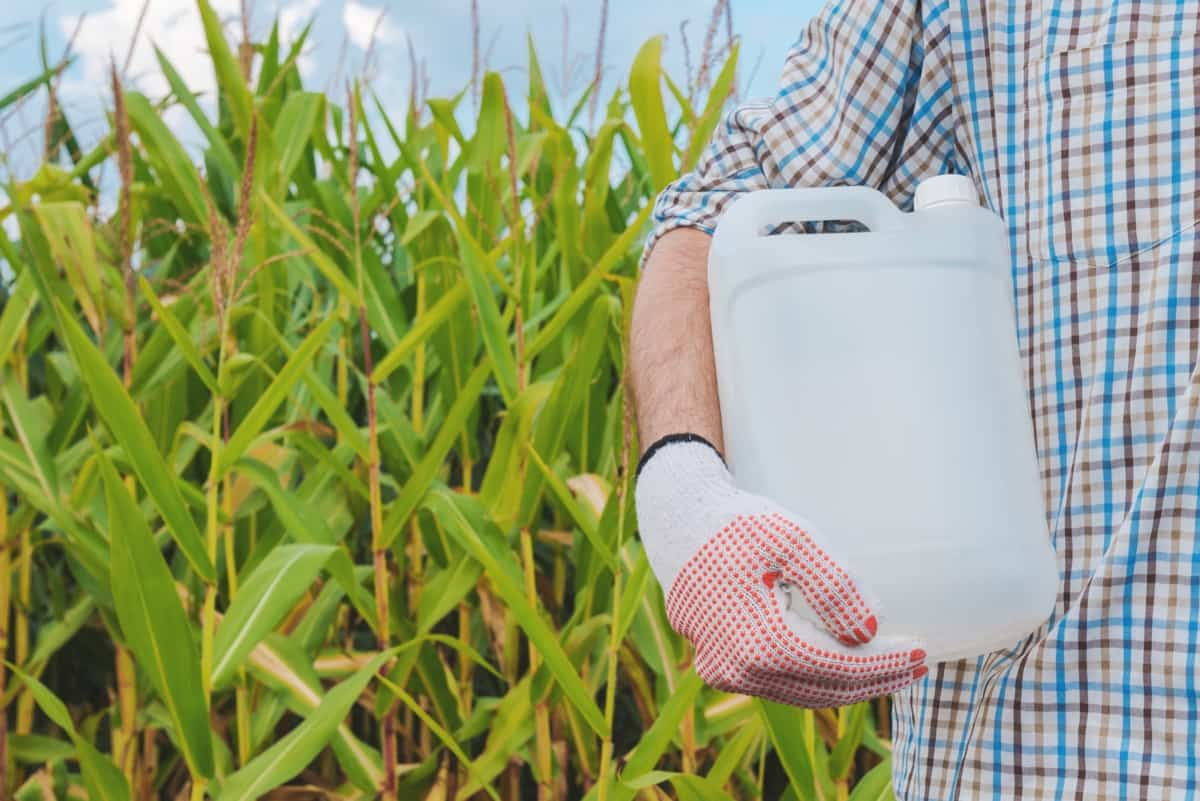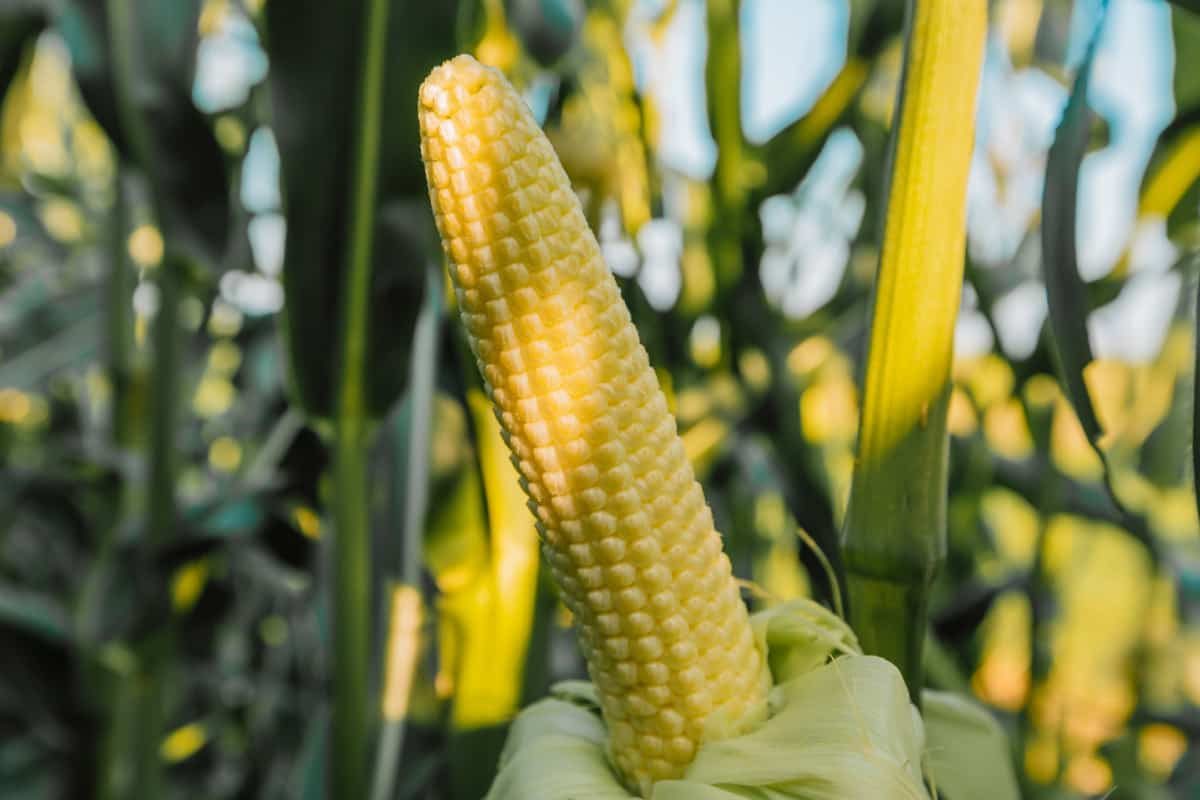The Pink stem borer (Sesamia inferens) is a destructive pest of maize (corn) plants that causes significant damage to the plant’s stems. The larvae of the pink stem borer feed on the inner tissues of the stem, which can cause the plant to wilt and ultimately lead to its death. Maize, known as corn, is a cereal grain that is one of the world’s most widely cultivated and consumed crops.

It’s a staple food in many countries. It is used for various purposes, including human consumption, livestock feed, and industrial products such as biofuels and starch. Maize is a warm-season crop that requires a long growing season, plenty of sunlight, and warm temperatures. The high yields and versatility of maize make it a valuable crop for farmers and an important contributor to food security in many regions of the world.
Pink Stem Borer Management in Maize
The Life Cycle of Pink Stem Borer
The life cycle of the pink stem borer in maize is accurate. The pink stem borer can complete its life cycle in 40-70 days, and there can be 4-6 generations per year, depending on the climate conditions. The eggs are laid in clusters of leaves and are pale yellowish-green in color. The larvae feed on the tissues of the stem after hatching, causing significant damage to the plant.
The fully-grown caterpillar is cylindrical, with a red-brown head and a 20-25 mm length. The pupation takes place inside the stem, and each stage of the life cycle, including the egg, larval, and pupal stages, lasts 7-10 days, 20-30 days, and 8-10 days, respectively.
Occurrence of Maize Pink Stem Borer Pest in Maize Crop
- Location of maize pink stem borer pest: It is native to the Mediterranean region and is found in India, Malaysia, Taiwan, Burma, Bangladesh, Sri Lanka, China, Korea, Japan, and Indonesia.
- Host range: The maize pink stem borer pest can infect different crops, including maize, barley, oats, rye, sorghum, rice, wheat, sugarcane, bajra, ragi, and guinea grass.
Factors Favoring the Population Increase of Maize Pink Stem Borer
- Monoculture – When maize is grown in a monoculture, the pest has a more consistent food source. It is less likely to be disturbed by other organisms making it easier for the pest to establish itself and reproduce in the same area.
- Climate – The suitable climate for the growth and development of MPSB is warm and humid. The warm temperatures provide ideal conditions for the larvae to feed and develop.
- Cultivation practices – Poor cultivation practices, such as late planting and inadequate crop rotation, can favor the population increase.
- Pesticide resistance – The use of certain pesticides can result in the development of pesticide resistance in the maize pink stem borer, making it more difficult to control.
In case you missed it: Maize Stem Borer Pest Management: Symptoms, Treatment, Chemical, Biological, Natural, and Organic Control

Identification of Pink Stem Borer in the Maize Field
- The eggs are creamy white and spherical, laid in batches between the leaf sheaths and stem of the plant.
- The larva is pinkish brown with a reddish brown head.
- The pupa is brown and obtect, pupating inside the stem.
- The adult is a straw-colored moth with forewings that have three black spots and a faint brown mid-stripe and white hindwings.
Damage Symptoms
- In the early stages of infestation, the pest bores into the stem of the plant, causing it to become weak and brittle, leading to lodging and breakage of the stem at the base.
- The pinkish larvae bore into the stems causing the characteristic “dead heart” symptom and a pink discoloration.
- Most damage is caused by the larvae feeding on the pith, leaves, and other parts of the plant, weakening it and causing it to dry out and eventually die.
- Its larvae feed on the stems of plants, causing the stems to become weakened and prone to lodging.
Percentage of Yield Loss in Maize due to Maize Pink Stem Borer Pest
- In African countries, such as Tanzania, losses of up to 100% of the maize crop have been reported. Losses of up to 25-30% have been reported in other countries, such as Kenya and Uganda.
- In Mexico, losses of up to 20-30% have been reported in some areas. In Central America, losses of up to 40-50% have been reported in some areas. In India, losses of up to 40-50% have been reported in some areas. In China, losses of up to 30-40% have been reported in some areas.
- In Italy, losses of up to 40-50% have been reported in some areas. In France, losses of up to 30-40% have been reported in some areas. The ETL is 10% dead hearts.
Cultural Control
- Uprooting and destroying infected maize plants can help reduce the population of the pink stem borer and prevent it from spreading to healthy plants.
- Collecting and destroying the stubbles after harvesting the crop can also help reduce the number of places where the pink stem borer can lay its eggs.
- Crop rotation can also be an effective management strategy as it can help reduce the buildup of the pink stem borer population in a specific area. By planting different crops in different seasons, you can break the pest’s life cycle and reduce the damage it causes.
Chemical Control
The application of BHC (benzene hexachloride) and DDT (dichlorodiphenyltrichloroethane) at 0.1% in spray or 1% in dust, as well as the spray of fenthion, fenitrothion, quinalphos, phosphamidon, and granules of lindane, can be effective in controlling the pink stem borer pest in maize.
In case you missed it: Maize Aphids Pest Management: Symptoms, Treatment, Chemical, Biological, Natural, and Organic Control

However, it’s worth noting that some of these chemicals, such as DDT, are highly toxic and can have adverse environmental impacts. It is also important to use pesticides responsibly and follow the recommended application guidelines to avoid harm to non-target species and the environment.
Biological Control
- The egg is parasitized by Telenomeus spp. and Trichogramma minutum.
- The larva by Apanteles flavipes, Bracon chinensis, and Sturmiopsis inferens, and
- The pupa by Xanthopinpla spp. and Tetrastichus aygari. These natural predators can play an important role in controlling the population of the pink stem borer and reducing the damage it causes to the maize crop.
- However, it is important to maintain a healthy balance of predators and pests through sustainable agriculture practices that promote biodiversity and avoid excessive use of chemical pesticides.
Organic/Natural Control
- Light traps are a commonly used method for monitoring and reducing the adult population of the pink stem borer in maize.
- The light traps use artificial light to attract the adult moths, which are then killed by the trap.
- Light traps are typically set up at dusk and operated until midnight when the adult moths are most active.
- The use of light traps helps to reduce the number of moths that lay eggs on the maize plants, thereby reducing the overall pest population and damage caused to the crop.
- Light traps can be combined with other control measures, such as crop rotation, intercropping, companion planting, and resistant varieties, for a more comprehensive pest management strategy.
Preventive Measures
- By planting more resilient varieties, planting synchronously with other farmers, and planting densely, you can help make it more difficult for the moths to lay their eggs and for the larvae to damage the plants.
- Intercropping with legumes and using trap crops can also be effective, as can monitoring fields regularly and removing infected plant parts.
- Adequate nitrogen and water management, weed control, and timely planting can also help improve the health of the maize crop and reduce susceptibility to pest damage.
In case you missed it: Maize Shoot Fly Management: Symptoms, Treatment, Chemical, Biological, Natural, and Organic Control

Conclusion
The pink stem borer is a common pest of maize crops that can cause significant damage to plants if not appropriately managed. Effective management of this pest requires a combination of chemical, biological, natural, and organic control measures. Symptoms of infestation include wilting, yellowing, and death of the growing point, as well as the formation of dead hearts and oblong holes in leaves. A comprehensive pest management strategy, including a combination of chemical, biological, natural, and organic control measures, is essential for effectively managing the pink stem borer and improving the health and productivity of maize crops.
- Beneficial Insects in Pest Management
- Natural Solutions for Pest Control in Flower Gardens
- Types of Fungicides Used in Agriculture
- Common Issues in the Fruit Development Stage of Pomegranate Farming
- Fruit Development Issues in Papaya: Easy Solutions and Treatment
- Soil-Borne Diseases and How to Protect Your Plants
- Practices to Prevent Disease Spread in the Garden
- From Wilted to Thriving: How to Treat Root Rot Naturally in Houseplants
- Natural Remedies to Cure Brown Spots on Fig Tree Leaves